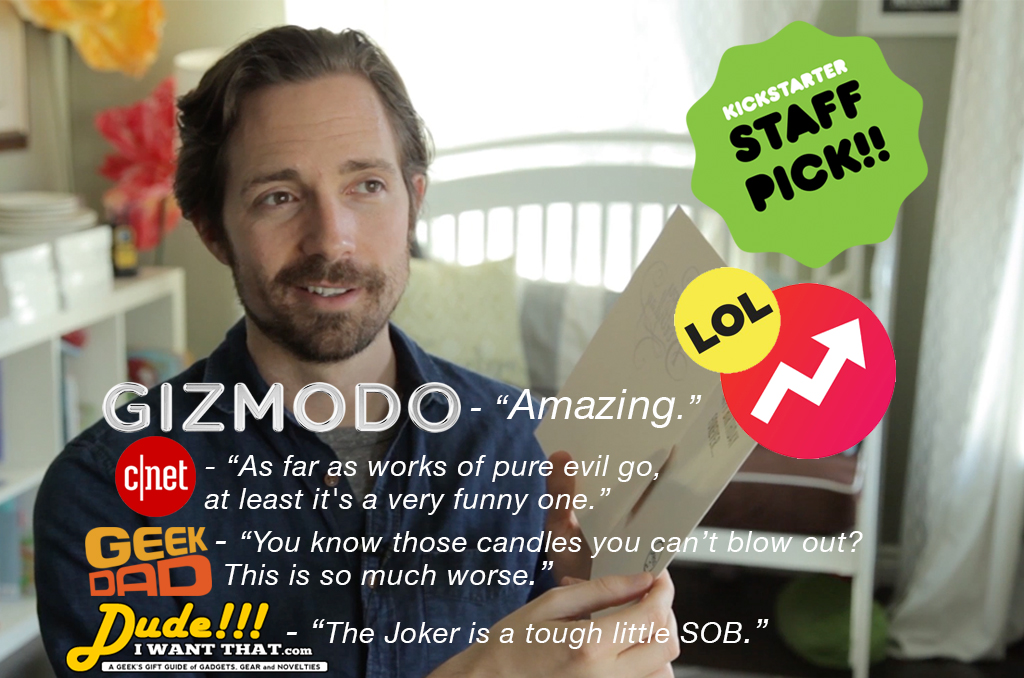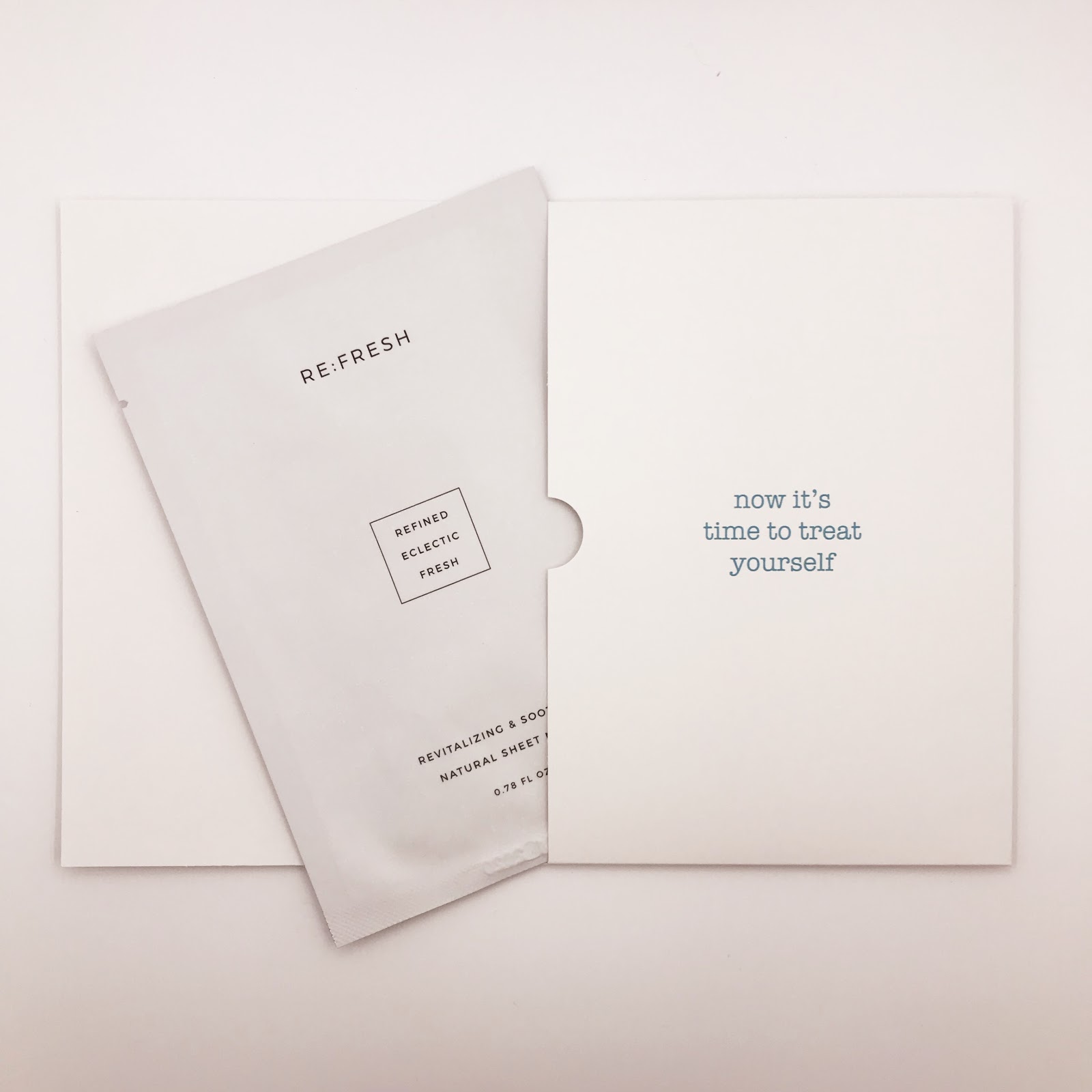How I Create New Ideas And Fail Quickly
Hi, my name is Travis Peterson and I am the co-founder of Joker Greeting and president as well. I like to make products.
I have been lucky and fortunate to find some success in making original prank gifts. Founded in 2015 and launched on Kickstarter, the plan was to make enough money to buy a new PS4 (I just wanted to have a goal) so we expected $7,500 to be enough but hoped it would break out and we could reach $10,000.
Instead, Joker Greeting Kickstarter raised $92,073 in 30 days and I became so busy with production and orders and building the business I bought the PS4 15 months later. Joker Greeting officially launched with a few prototypes, a witty and clean video for marketing, and enough time to email a bunch of people. I had zero dollars in ads or PR.

Nothing grows organically forever and Joker Greeting needed to keep creating new product lines and helps my incessant need to ideate and build something new. It’s my tiny incubator of joy.
My process for coming up with new ideas
I don’t have a defined process but it’s more of a behavioral habit to question everything. And I do mean everything. Tony Fadell, Nest Founder, once talked about our need to look at the small and invisible annoyances and he gave the example of the stickers on the apples that we habitually pull off before eating. I guess this is what I do but he formalizes it better than me. He has it based on a principle of science and structure while I just do it.
My wife gets tired when I ask her “why do you think it was designed this way?” and after 8 years of marriage I have learned to stop asking her. Well I haven’t completely stopped but I limit myself.
To me it’s a natural curiosity to try and see how someone else sees design or use. Again, I’m not necessarily trying to attack or fix a problem but to better understand why someone would design it this way. I do this with remote controls, forks, computers, apps, etc. Why that color or style?
This “process” doesn’t bring me new ideas directly but keeps my mind busy and often later in moments of silence like driving or doing dishes or walks around the office ideas will populate and I write those ideas down. I’m sure most of us have had this experience with names on the tip of our tongue that bubble up later. Our brain can keep noodling.
I don’t look for problems to solve I just try to seek knowledge in many areas and then let my brain, over time, process that information into seeing something else under a new light.
In order to switch up my life and I make it a goal to read many types of books from fiction to nonfiction repeatedly and never stick to one subject. I may read a book about rain (yes, a whole book about rain) then I switch to fiction or fantasy or comic books. Then I decide that I want to read some poetry like Billy Collins. And even still, I tend to read more nonfiction but it’s not always business in fact it is rarely business books. I prefer memoirs of startups like Shoe Dog or Ray Dalio’s Principles or history books. My point is not to suggest you read what I am reading but to try and read often and explore outside perspectives to your own.
In the end, I have a long list of ideas and many of them I will not fix or create. That’s okay. I could write a list of 20-30 ideas and none of them seem feasible where I am today. They are great ideas but I don’t think I have the resources or team to build it properly. I don’t erase those ideas I just let them sit on my list.
But of course, some ideas bubble to the top, tested by time, where I see that I do have resources and friends that can help. Let me talk about my most recent product launch that took about 6 weeks from ideation to soft-launch with a website and inventory.
Executing quickly with an idea - an example
I listen to podcasts in my car as I travel to and from the office. I had just finished Ear Hustle, a great podcast about life in prison. I had some 20 minutes before I got home and just drove in silence.
I started to ask myself questions about greeting cards and what else I could ship inside a greeting card that would make it interesting or funny or valuable to a recipient. Beauty came to mind and I started to think about shipping perfumes or makeup to people but then I recalled that Sheet Masks are a growing trend and that even my wife uses them and loves them. Clearly none of this had to do with Ear Hustle or a book I was reading. But my wife has been using them recently and i’ve seen them more often in stores (oh, my wife doesn’t like when I grocery shop either because I like to peruse and look at what is new too; she is in and out in 10 seconds).
Sheet masks are flat, soft, flexible, and can be perfectly shaped for a greeting card. I would just need to design a greeting card that can hold a sheet mask and I could wholesale some sheet masks to test the market. After bouncing the idea off a few people and friends I was off to the races.
But why this idea?
First of all, Joker Greeting makes greeting cards. I have the channels and some buyers already in this space or contacts that have denied me. I also have a few contacts in manufacturing and design and some designs I haven’t used in Joker Greeting.
Finally, I have a friend, Mandy Tom, whom I met in college and was eager to work on a niche startup in the gift industry and she immediately took to the idea and could help me grow it. She and I are partners on this endeavor to change the greeting card industry again. I firmly believe you shouldn’t do anything alone if you can help it.
Bloomgreetings.com was ideated and launched in 6 weeks. Samples are out to buyers and we have interest from two very good sources.

Our costs are not super low but we know they can be improved. Our website is not incredibly sleek but we know we can make it better. Our card designs are not sexy but those can be updated. Our go-to-market plan is shaky but that is fine. The point is you don’t need it all strategically placed in front of you to launch.
But this sheet mask greeting card is very easy to understand and dead simple to use. It is impossible to know, at this point, if Bloomgreetings.com will be a break-out viral success but my confidence is high that we will find our niche. But it wasn’t just my high-confidence that lead me to push this into production.

More importantly, the cost to build all of this is below $1,000.00 today. Yes, a company was started for less than $1,000.00 with inventory and a website and some basic marketing material. You will never know until you make it and put it into the world.
That is the only real trick you need to know. In a few words, Stop hiding, start making.
And if we can sell all of the inventory we will be net positive. Within 6 months we should know if this deserves a lot more attention or none at all and it really didn’t cost that much time or money. And we have some amazing greeting cards for our friends and family!
How to tell if your idea is bad
Fred Wilson is a VC I respect quite a bit. Even if he is not the most successful VC today, he is well respected and has a great blog. I saw him speak at an event and he quoted Mike Tyson that everyone has a plan until they get punched in the face; which, you will understand when you launch your company.
He believes that if an idea is seen as bad from many other VC’s he likes to take an even closer look. AirBNB is a bad idea on paper (many smart people turned this down, ask Chris Sacca). Uber is a terrible idea on paper. And Apple making a phone to challenge Nokia was also a bad idea and many derided Apple and Steve Jobs for the attempt.
Those are great examples of seemingly bad ideas that obviously are not really bad ideas. That being said, I don’t know exactly how to determine what is a good or bad idea. There are bad teams and bad partners which destroy a company faster than a bad or fantastic idea. Theranos was a great idea but clearly destroyed by the founders. Coolest Cooler was a great idea but poorly executed.
I do not think there is one way to build a great company or a small business. I am not sure I am qualified to tell anyone how to do this exactly. This isn’t science it is art. Maybe it’s a mix, I don’t know.
Regardless, I like to make niche ideas that target unique groups. But to you and the world I strongly recommend that you pick an industry that is so large that even if you win a small segment or need to pivot within that industry there is room for success. I have personally witnessed this inside a small hardware startup that failed time and again and pivoted again, raised money again, and now it seems they are on track. A niche of a niche but it’s big enough where it matters.
Reflecting on one of my bad ideas
My less successful launch was Messy Cards. I still sell a few but not as many as I would like. Glitter inside greeting cards is not a super new idea but Messy Cards is a unique way to easily package glitter inside a card without the shipper spilling glitter or dealing with glitter themselves or glue.
The actual card works but it’s not perfect on execution. And I think ultimately wasn’t raising the bar enough or more than other products in the gag market. I still make and sell them but it’s not my focus. But I am super happy I made them and tested the market because it has helped me develop other products (hopefully you see soon!).
When to call it quits on your idea
The answer is never, and the answer is when you have to. You can read plenty of stories that go both ways in the short-run and long-run.
People that never gave up and won and people who did give up and found something else and won. My personal story is that I started at in investment bank in New York City and decided to build a software startup. I was super naive but I felt I should try it. I spent a lot of money on that startup and way too much time (in hindsight).
When I compare that startup to Joker Greeting the key difference to me is that Joker Greeting was a product that was meeting demand while my first startup was me trying to convince demand to match my product. And I think my biggest problem was I was alone without the right partner.
And I think AirBNB and Uber are bad ideas on paper but ultimately did just that; they brought a product to customer demand rather than trying to be demand to a product. Do not expect people to change for you. At least I don’t anymore.

Download the report and join our email newsletter packed with business ideas and money-making opportunities, backed by real-life case studies.

Download the report and join our email newsletter packed with business ideas and money-making opportunities, backed by real-life case studies.

Download the report and join our email newsletter packed with business ideas and money-making opportunities, backed by real-life case studies.

Download the report and join our email newsletter packed with business ideas and money-making opportunities, backed by real-life case studies.

Download the report and join our email newsletter packed with business ideas and money-making opportunities, backed by real-life case studies.

Download the report and join our email newsletter packed with business ideas and money-making opportunities, backed by real-life case studies.

Download the report and join our email newsletter packed with business ideas and money-making opportunities, backed by real-life case studies.

Download the report and join our email newsletter packed with business ideas and money-making opportunities, backed by real-life case studies.








